Fangshu Yang
Revisit Geophysical Imaging in A New View of Physics-informed Generative Adversarial Learning
Sep 23, 2021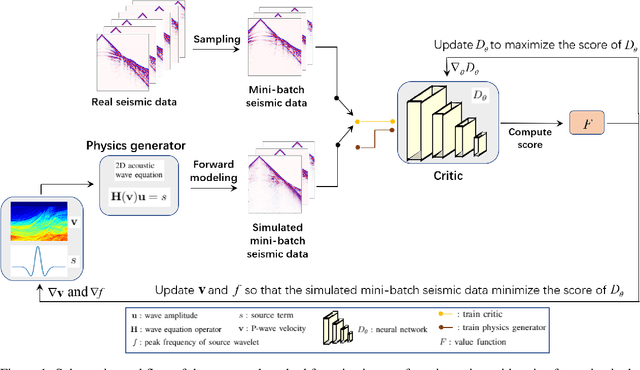

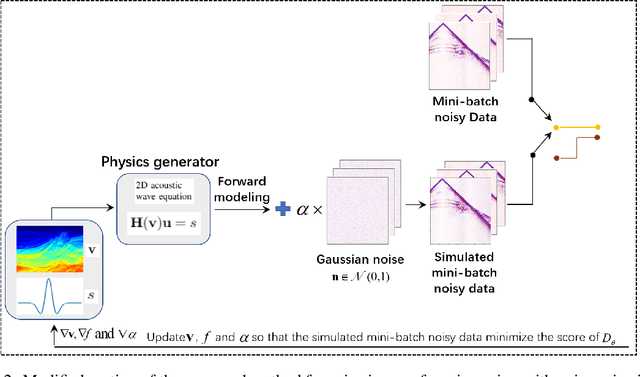

Abstract:Seismic full waveform inversion (FWI) is a powerful geophysical imaging technique that produces high-resolution subsurface models by iteratively minimizing the misfit between the simulated and observed seismograms. Unfortunately, conventional FWI with least-squares function suffers from many drawbacks such as the local-minima problem and computation of explicit gradient. It is particularly challenging with the contaminated measurements or poor starting models. Recent works relying on partial differential equations and neural networks show promising performance for two-dimensional FWI. Inspired by the competitive learning of generative adversarial networks, we proposed an unsupervised learning paradigm that integrates wave equation with a discriminate network to accurately estimate the physically consistent models in a distribution sense. Our framework needs no labelled training data nor pretraining of the network, is flexible to achieve multi-parameters inversion with minimal user interaction. The proposed method faithfully recovers the well-known synthetic models that outperforms the classical algorithms. Furthermore, our work paves the way to sidestep the local-minima issue via reducing the sensitivity to initial models and noise.
Quantitative reconstruction of defects in multi-layered bonded composites using fully convolutional network-based ultrasonic inversion
Sep 11, 2021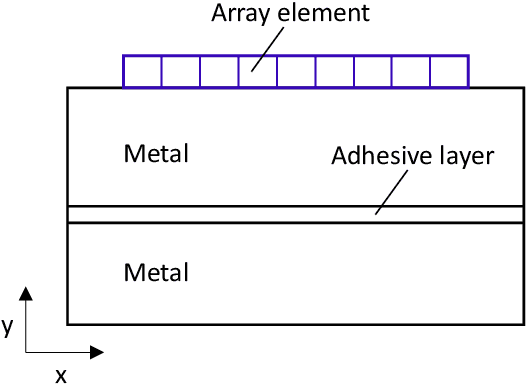
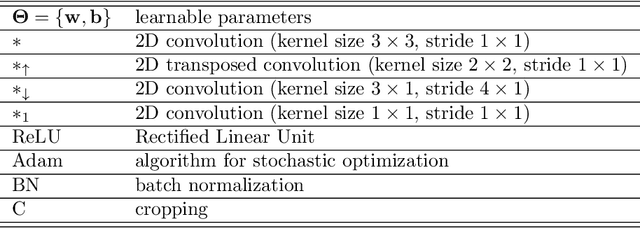
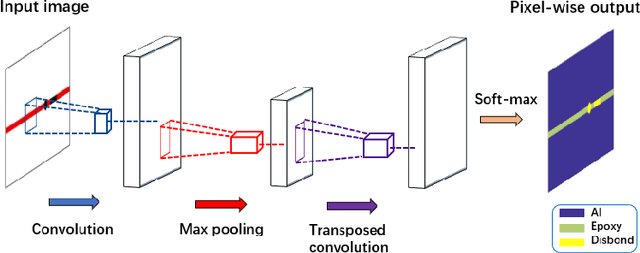

Abstract:Ultrasonic methods have great potential applications to detect and characterize defects in multi-layered bonded composites. However, it remains challenging to quantitatively reconstruct defects, such as disbonds and kissing bonds, that influence the integrity of adhesive bonds and seriously reduce the strength of assemblies. In this work, an ultrasonic method based on the supervised fully convolutional network (FCN) is proposed to quantitatively reconstruct defects hidden in multi-layered bonded composites. In the training process of this method, an FCN establishes a non-linear mapping from measured ultrasonic data to the corresponding velocity models of multi-layered bonded composites. In the predicting process, the trained network obtained from the training process is used to directly reconstruct the velocity models from the new measured ultrasonic data of adhesively bonded composites. The presented FCN-based inversion method can automatically extract useful features in multi-layered composites. Although this method is computationally expensive in the training process, the prediction itself in the online phase takes only seconds. The numerical results show that the FCN-based ultrasonic inversion method is capable to accurately reconstruct ultrasonic velocity models of the high contrast defects, which has great potential for online detection of adhesively bonded composites.
Robust Phase Unwrapping via Deep Image Prior for Quantitative Phase Imaging
Sep 24, 2020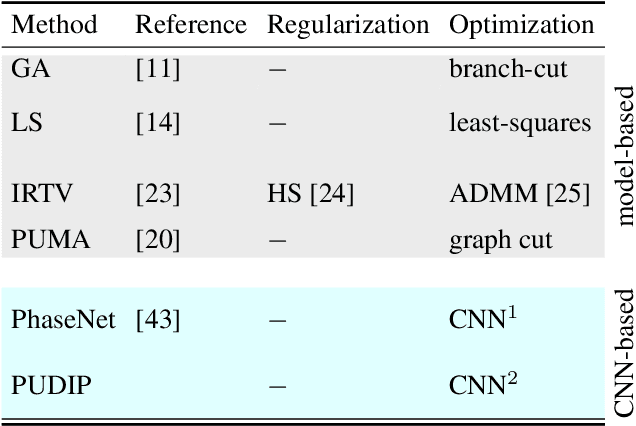
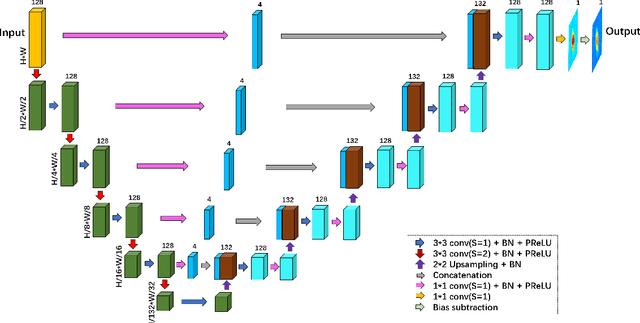

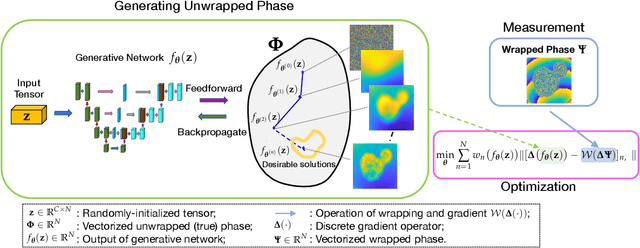
Abstract:Quantitative phase imaging (QPI) is an emerging label-free technique that produces images containing morphological and dynamical information without contrast agents. Unfortunately, the phase is wrapped in most imaging system. Phase unwrapping is the computational process that recovers a more informative image. It is particularly challenging with thick and complex samples such as organoids. Recent works that rely on supervised training show that deep learning is a powerful method to unwrap the phase; however, supervised approaches require large and representative datasets which are difficult to obtain for complex biological samples. Inspired by the concept of deep image priors, we propose a deep-learning-based method that does not need any training set. Our framework relies on an untrained convolutional neural network to accurately unwrap the phase while ensuring the consistency of the measurements. We experimentally demonstrate that the proposed method faithfully recovers the phase of complex samples on both real and simulated data. Our work paves the way to reliable phase imaging of thick and complex samples with QPI.
Deep-learning inversion: a next generation seismic velocity-model building method
Feb 17, 2019



Abstract:Seismic velocity is one of the most important parameters used in seismic exploration. Accurate velocity models are key prerequisites for reverse-time migration and other high-resolution seismic imaging techniques. Such velocity information has traditionally been derived by tomography or full-waveform inversion (FWI), which are time consuming and computationally expensive, and they rely heavily on human interaction and quality control. We investigate a novel method based on the supervised deep fully convolutional neural network (FCN) for velocity-model building (VMB) directly from raw seismograms. Unlike the conventional inversion method based on physical models, the supervised deep-learning methods are based on big-data training rather than prior-knowledge assumptions. During the training stage, the network establishes a nonlinear projection from the multi-shot seismic data to the corresponding velocity models. During the prediction stage, the trained network can be used to estimate the velocity models from the new input seismic data. One key characteristic of the deep-learning method is that it can automatically extract multi-layer useful features without the need for human-curated activities and initial velocity setup. The data-driven method usually requires more time during the training stage, and actual predictions take less time, with only seconds needed. Therefore, the computational time of geophysical inversions, including real-time inversions, can be dramatically reduced once a good generalized network is built. By using numerical experiments on synthetic models, the promising performances of our proposed method are shown in comparison with conventional FWI even when the input data are in more realistic scenarios. Discussions on the deep-learning methods, training dataset, lack of low frequencies, and advantages and disadvantages of the new method are also provided.
 Add to Chrome
Add to Chrome Add to Firefox
Add to Firefox Add to Edge
Add to Edge